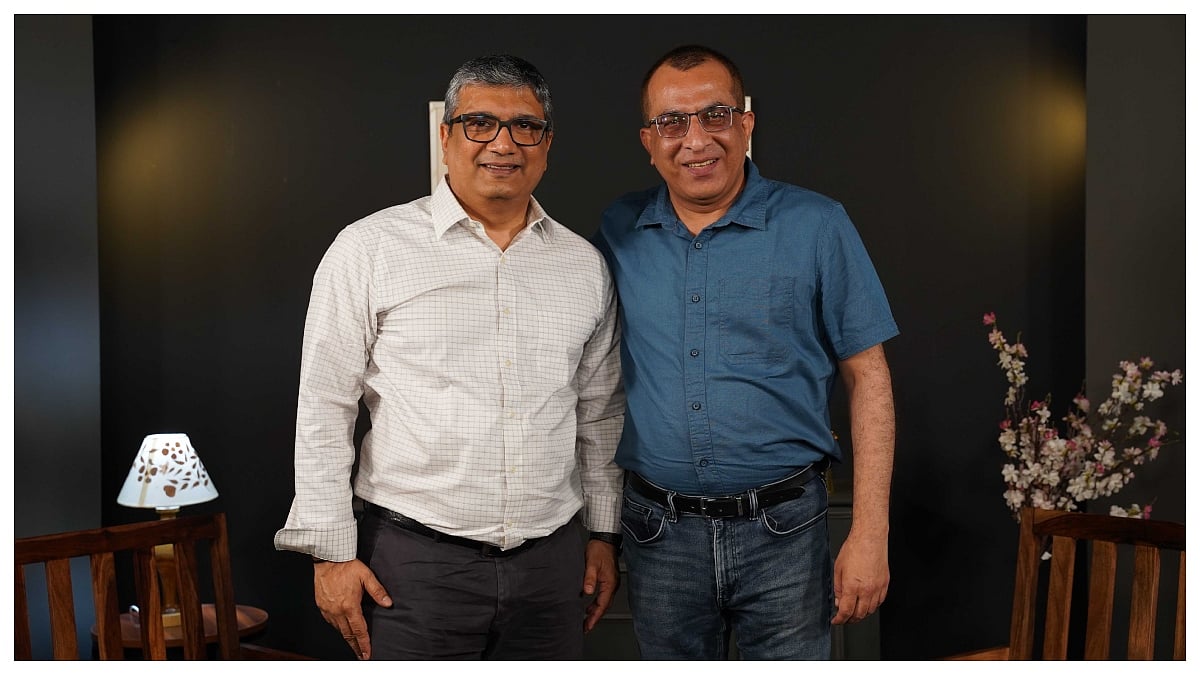Vora pointed out that the real geopolitical focus now was the US-China rivalry. |
In an insightful episode of Simple Hai!, veteran finance journalist Vivek Law sat down with Mihir Vora, the seasoned Chief Investment Officer of TRUST Mutual Fund, for a conversation that spanned three decades of market wisdom. From analysing geopolitical tremors to decoding investment behaviour, Vora shared his perspectives on navigating turbulence, staying grounded and the quiet strength that defines India’s growth story.
The World Is Reshuffling — and India Stands Out
The conversation opened with Law jokingly asking Vora how annoyed he was with Donald Trump. Vora laughed it off, saying people like him were small players trying to react to global currents. But he didn’t underestimate the significance of Trump-era decisions. “It was a game-changing moment,” Vora said, describing how the global order—once firmly under US leadership—was now fragmented. “It’s become a case of every nation for itself.”
Yet in this disruption, he saw opportunity for India. Thanks to its historic non-aligned stance and balanced global relationships, India appears to be navigating the changing world order better than most. From strong trade ties with the U.S.to longstanding relations with Russia, China, Japan and Europe, India had managed to stay diplomatically agile.
Vora pointed out that the real geopolitical focus now was the US-China rivalry. The West had expected China to open up economically and politically in the 1990s, but China had played by its own rules—leveraging global markets without offering transparency. Over the years, China had cornered 80–100% of production in critical sectors like electronics, rare earths, and pharmaceuticals.
“They can hold the world to ransom,” Vora warned, noting that even the US now viewed China as a strategic threat.
Lessons from Crises — and Why Panic Is Often a Buying Opportunity
Reflecting on past crises—from the Asian financial crisis to Covid-19—Vora highlighted a key pattern: central banks and governments always stepped in with monetary or fiscal support. “The lesson since 1998 has been clear: nobody wants a depression,” he said. Whether it was the GFC or the pandemic, the playbook of massive stimulus had ensured market and economic recovery.
That’s why, Vora argued, extreme panic in markets often presented investment opportunities. “We now have a toolkit. You don’t have to wait for a collapse—intervention is a given.”
India’s Consistent Resilience
Despite facing its share of shocks—nuclear tests, sanctions, oil price surges—India had shown remarkable economic resilience. Vora pointed out that India’s GDP growth had rarely dropped below 2–3%, even during crises. While India had never posted 10–12% growth like China, its consistency was its strength.Since the 2008 financial crisis, India had undergone significant structural shifts.
Services exports—particularly IT—had soared, reducing the current account deficit. Oil’s share of GDP had dropped, making the economy less vulnerable to global price swings. Vora noted that with growing renewable energy adoption,
India could potentially see a zero current account deficit within the next 5–7 years. He also flagged the manufacturing opportunity. Even if global firms shifted just 5–10% of their supply chains away from China, India could benefit hugely. Given China’s economic scale, even a fraction of that redirection could fuel significant capacity creation in India.
Why FIIs Pulled Out — And What’s Changing Now
Law then turned to a pressing question: why had Foreign Institutional Investors (FIIs) pulled out of Indian markets in late 2024, despite India’s relative economic strength?
Vora cited four key reasons: the strength of the US dollar driven by rising bond yields; the RBI’s tight liquidity stance to curb unsecured lending; a temporary slowdown in government spending due to elections; and investor preference for the US as a carry trade destination.But these headwinds, Vora said, were reversing. “The dollar has peaked. RBI has started injecting liquidity. Government orders in infrastructure and defence have resumed. And domestic flows have stayed strong,” he explained. The return of FIIs could push markets higher in the months ahead.
What Should New Investors Do?
When asked for advice to new investors, particularly those who paused SIPs during recent volatility, Vora was clear: start with diversified funds. “Flexi-Cap or Multi-Cap funds are ideal starting points. Let fund managers decide the allocation across large, mid, and small caps,” he advised.While specialised funds like small-cap or thematic funds had appeal, Vora warned that they required deeper understanding and closer monitoring. For long-term growth, however, he believed small and mid-cap segments still offered the best potential, especially in a fast-evolving economy like India where new sectors constantly emerge.
A Career Shaped by Timing, Passion and Perspective
The conversation took a personal turn as Law asked Vora about his transition from mechanical engineering to capital markets. Vora traced it back to a modest middle-class upbringing, where stability and merit were the core values.
Cracking IIM Lucknow was a turning point, and a placement at SBI Mutual
Fund marked his entry into finance—just as India’s markets were opening up post-Harshad Mehta era. Unlike many of his peers, Vora chose fund management over investment banking, valuing time autonomy and long-term thinking over deal-making deadlines. “It was a lifestyle choice,” he said, one guided by passion, not paychecks.
Despite his success, Vora has remained grounded—a trait he attributes to his upbringing. “Recognition and respect matter more than money. Money is a byproduct,” he said simply.
Final Thoughts
Vora closed the conversation by expressing optimism about India’s economic trajectory and the mutual fund industry’s role in building long-term wealth. His message to investors was simple: stay disciplined, stay invested, and don’t be afraid of market noise.
In a world full of uncertainty, Vora’s philosophy stands out — clear-headed, deeply informed, and reassuringly human.
